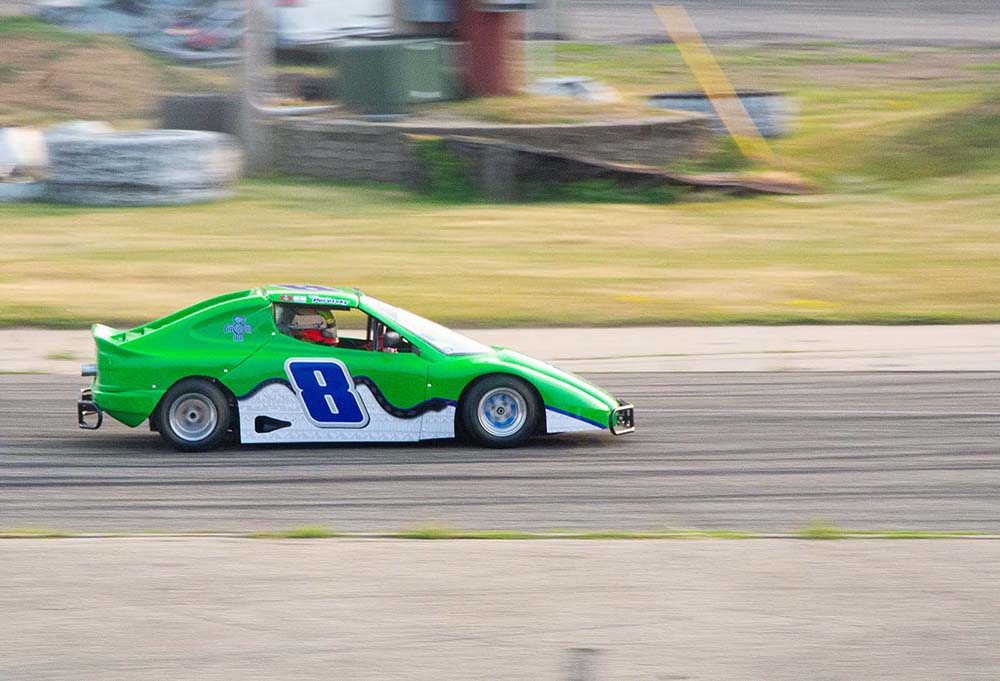
- Details
- By Kaili Berg
Thomas Poretsky is ready to race. Revving that engine and topping more than 50 miles per hour. Not bad for someone who doesn’t have a driver's license yet.
Poretsky is a 10-year-old race car driver who is the newest face in the youth races at Elko Speedway in Minnesota. He is the only Native youth that races at Elko.
“My passion for racing started from my family, my fourth grade teacher, and Spiderman. Spiderman is a teenager who got bit by a spider and struggles with it. He teaches me a lesson I won't forget, and that is to keep going when things get tough. It’s definitely something important to me,” Poretsky told Native News Online.
 Make A Monthly Donation Here
Make A Monthly Donation Here
Poretsky started racing last summer with the Minnesota Quarter Midget Racing Association. For winter, he raced in the kids leagues at ProKart in Burnsville. He worked up from the back of the pack and made 3rd place finish in the final spring season of kid’s league. In his current car, he’s raced a total of 8 races. Although he has not won yet in his bando, he has placed first in multiple races in his GoKart league.
“For a first season driver in a bando, just finishing every race is an accomplishment. Doing it without major damage to the car is a feather in the cap, and he's there. He's sitting at the back half of midpack in points right now, and we hope he'll keep climbing the ranks,” Solomon Poretsky, Thomas’s father, told Native News online.
Despite the dangers of racing, Poretsky faces his fears. Last season, he was starting out in a Quarter Midget, and during practice he ran into a cone.
“The car flipped over on its side, and when we got to him, he wouldn't let us take him out of the car. Instead, he gestured that he wanted to be flipped right side up, and that he wanted to get going again. That stuck out to me for a few reasons. The safety equipment is nice to have and that he's a tough little dude with great resilience. He's just really cool in the car,” said Solomon.
 Photo courtesy Solomon Porestsky
Photo courtesy Solomon Porestsky
Poretsky’s car stands out in the crowd. His lucky number eight race car has decals that represent both flags from Israel (his father is Jewish) and his Quechan tribe. His choice of colors are green and blue, but serve a special purpose to the young racer and his family.
“You look at the Colorado River and the Jordan River and the naturality of them. Water is a big part of our culture. Both the need for water and access to it, so we thought the color blue was a nice way to tie those together,” said Solomon.
The race car also features a rattlesnake that curves into a river, which ties together the true diversity of the Poretsky family as a whole.
“I think it’s really important to make a point for both of our cultures. To show that we are here and we are everywhere, and we can be everywhere. I think there are many different perceptions of our cultures, but we belong on the race track, and we know how to race,” said Solomon.
“You go to the race and you see thousands of people in the stands and most of them really wish that they could be in a car on the track. Thomas stopped wishing and did it. I know he's scared, uncomfortable, and frustrated at times. But he doesn't let that stop him,” said Solomon.
More Stories Like This
Native News Weekly (August 25, 2024): D.C. BriefsUS Presidents in Their Own Words Concerning American Indians
Next on Native Bidaské: Preserving Indian Health with A.C. Locklear
Hozhonigo Institute Helps Drive $34.5M in Grant Pipeline for Tribal Communities
Torres, LaMalfa Lead Push to Safeguard Culturally Important Tribal Seed Varieties
Help us defend tribal sovereignty.
At Native News Online, our mission is rooted in telling the stories that strengthen sovereignty and uplift Indigenous voices — not just at year’s end, but every single day.
Because of your generosity last year, we were able to keep our reporters on the ground in tribal communities, at national gatherings and in the halls of Congress — covering the issues that matter most to Indian Country: sovereignty, culture, education, health and economic opportunity.
That support sustained us through a tough year in 2025. Now, as we look to the year ahead, we need your help right now to ensure warrior journalism remains strong — reporting that defends tribal sovereignty, amplifies Native truth, and holds power accountable.
 The stakes couldn't be higher. Your support keeps Native voices heard, Native stories told and Native sovereignty defended.
The stakes couldn't be higher. Your support keeps Native voices heard, Native stories told and Native sovereignty defended.
Stand with Warrior Journalism today.
Levi Rickert (Potawatomi), Editor & Publisher

